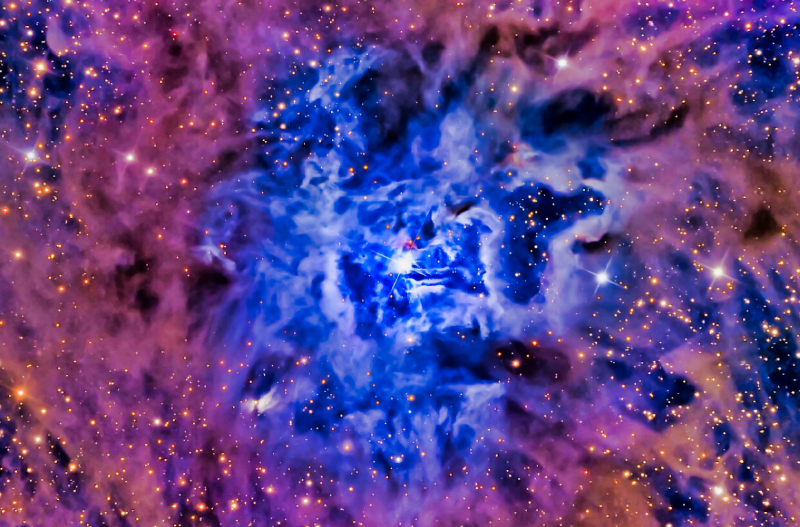Called the Iris Nebula because of its vague resemblance to a blue Iris flower.
The picture, courtesy of the Hubble telescope, is of the Iris nebula—known as NGC 7023 to its intimate friends. It is roughly 1,300 light-years distant, and lives in the constellation Cepheus. Nebulae are believed to be clouds of dust and gas surrounding a hot star, that together comprise the remnants of a supernova. The pretty blue petals of the Iris Nebula span about six light-years.
All of this and pretty much everything else we witness beyond the planets in our solar system is plasma—matter in an ionic state (i.e. electrically charged state). It is estimated (by NASA) that plasma comprises 99.9% or more of the Universe.
Given this undisputed fact, it is indisputable that the Universe is electrical. Plasma (ions) in motion, create magnetic fields and magnetic fields naturally influence ions to move. This simple (and irrefutable) idea will, in the coming decades, provide the basis for a cosmology that will replace the increasingly absurd Lambda Cold Dark Matter cosmology.
This will take time, for a variety of reasons. The main one is that the current doctrine of astrophysics has so much invested in it—not just the immense budgets of space agencies, but the careers of many academics who have tied their careers to the “accepted theories” and would be bullied like the Catholic Church bullied Galileo, if they were to vacate their seat on the gravy train. This applies to all the media folk too, who write articles and make documentaries about the non-existent phenomena of Big Bang, Black Holes, Dark Matter, Dark Energy and all the other flights of fancy from the world of astrophysics.
The backdrop to all of this is that astronomers denied that anything electrical happened in space for many years, until they began to launch satellites. Discoveries of the electrical nature of the solar system gradually emerged. Of course, it was long known that the aurora borealis was an electrical phenomenon—but it was ignored. In 1959, the Soviet spacecraft Luna 1 first directly observed the solar wind and measured its strength, using hemispherical ion traps. The discovery was verified by Luna 2, Luna 3, and Venera 1. Although named the Solar Wind, it is in fact a continuous stream of plasma that originates primarily from the sun’s equatorial region.
Consequently, most of the theory of astrophysics is based on the idea that the driving force of the cosmos is gravity, based on Einstein’s conception of space as four-dimensional space-time. One simple fact should have made the world of astrophysics think again:
The force of electromagnetism is 10 to the 36th power stronger than the force of gravity.
It’s 10,000,000,000,000,000,000,000,000,000,000,000,000 times stronger. How this can be ignored is beyond comprehension, and yet the sorry astrophysicists still believe that gravity governs everything. The whole reason for proposing the wacky idea of dark matter was that they could find no explanation for the orbit of stars within a galaxy. So they invented the presence of matter that you cannot see to explain it. The truth appears to be that it is electromagnetic forces that determine the motion of a galaxy.
Anyway, the brave scientists and engineers who have been working on the SAFIRE project have commenced the process of undermining the whole sorry mess. Watch this video if you want to know the details.
The importance of this to objective science cannot be understated. Gurdjieff’s cosmology contradicts the modern theories of astrophysics in many ways, but it gels well with plasma cosmology.
